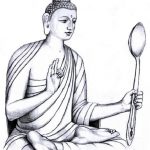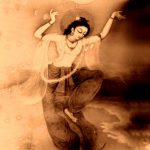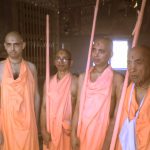by Srila Bhakti Pramode Puri Goswami, from Art of Sadhana.
In the Bhagavad-gita (15.15), Lord Krishna says,
vedais ca sarvair aham eva vedyo,
vedanta-krd veda vid eva caham
“I am the object to be known by all Vedic literature. I am the composer of the Upanisads or Vedanta and the knower of the true meaning of the Veda.”
In the Svetasvatara Upanishad (6.11) the Supreme is described as the attributeless Brahman:
eko devah sarva-bhutesu gudhah,
sarva-vyapi sarva-bhutantaratma
karmadhyaksah sarva-bhutadhivasah,
saksi cetah kevalo nirgunas ca
“There is but one divine entity, hidden within all beings. All- pervading, he dwells within every created thing; he is the overseer of all activities, the refuge of all creatures, the witness, the consciousness, the one existing thing, He has no attributes.”
The Srimad Bhagavatam (1.2.11), however, shows that there is an aspect of the divine beyond even this Brahman. It is paratpara, or “beyond that which lies beyond.”
vadanti tat tattva-vidas, tattva yaj jnanam advayam
brahmeti paramatmeti, bhagavan iti sabdyate
“Knowers of the truth have ascertained that the supreme non- dual substance is named in three ways: as Brahman, as Paratmatman, and as Bhagavan.”
The Bhagavan, or personal aspect of the Supreme, is known as Krishna—krsnas tu bhagavan svayam. (Srimad Bhagavatam, 1.3.28)
harir hi nirgunah saksat, purunaù prakateu parau
“The Supreme Lord Hari is untouched by the material qualities. He is the supreme person, beyond the material nature.” (Srimad Bhagavatam, 10.88.5)










